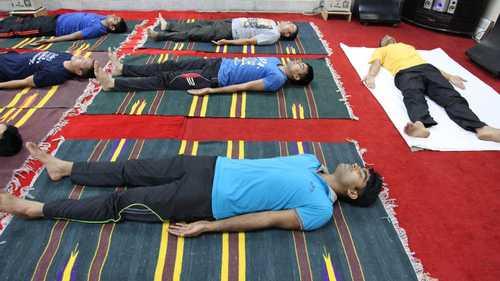Why slowing your breathing helps you relax
Curated from: bbc.com
Ideas, facts & insights covering these topics:
4 ideas
·2.62K reads
14
Explore the World's Best Ideas
Join today and uncover 100+ curated journeys from 50+ topics. Unlock access to our mobile app with extensive features.
Frequency of breath
Even though we have been breathing for all our lives, we can still learn a lot about this most basic instinct.
Quick, shallow, and unfocused breathing may contribute to anxiety, depression, and high blood pressure. However, scientists find that around six exhalations a minute can be restorative, triggering a relaxation response in the brain and body.
420
884 reads
Breathwork
Breathwork is not the same as mindfulness. Mindfulness involves passive observation of the breath, whereas breathwork requires you to actively change the way you breathe.
Breathwork includes ensuring you breath with your diaphragm, rather than the movement of your chest. It will fill your lungs with more air while also slowing the pace of your breathing.
321
607 reads
Speed ramp to relaxation
Right breathing can have a profound effect on calming the mind quickly and can act as a speed ramp into the meditation practice by getting you to that place of no-thought.
241
510 reads
Slow breathing benefits
Slow breathing is a quick and easy way to change your state, whether it is to decrease stress or increase your energy and focus, or even in creative problem-solving. Other science-backed benefits include:
- There is a short-term reduction in blood pressure after guided, slow breathing exercises.
- It can alleviate the symptoms of depression and anxiety.
- It appears to help relieve insomnia.
- It can improve people’s management of pain.
- It can help patients cope with chronic conditions like arthritis.
367
626 reads
IDEAS CURATED BY
Friend of animals everywhere. Hardcore internet enthusiast and avid reader. My favorite topic is how to live a healthy life
Cora H.'s ideas are part of this journey:
Learn more about health with this collection
Practicing empathy in relationships and communication
Understanding the importance of balance in personal and professional life
Defining your path in life
Related collections
Similar ideas
1 idea
4-7-8 Breathing: How It Works, How to Do It, and More
healthline.com
7 ideas
The Profound Power of Breathing
elemental.medium.com
6 ideas
6 Breathing Exercises to Relax in 10 Minutes or Less
healthland.time.com
Read & Learn
20x Faster
without
deepstash
with
deepstash
with
deepstash
Personalized microlearning
—
100+ Learning Journeys
—
Access to 200,000+ ideas
—
Access to the mobile app
—
Unlimited idea saving
—
—
Unlimited history
—
—
Unlimited listening to ideas
—
—
Downloading & offline access
—
—
Supercharge your mind with one idea per day
Enter your email and spend 1 minute every day to learn something new.
I agree to receive email updates
